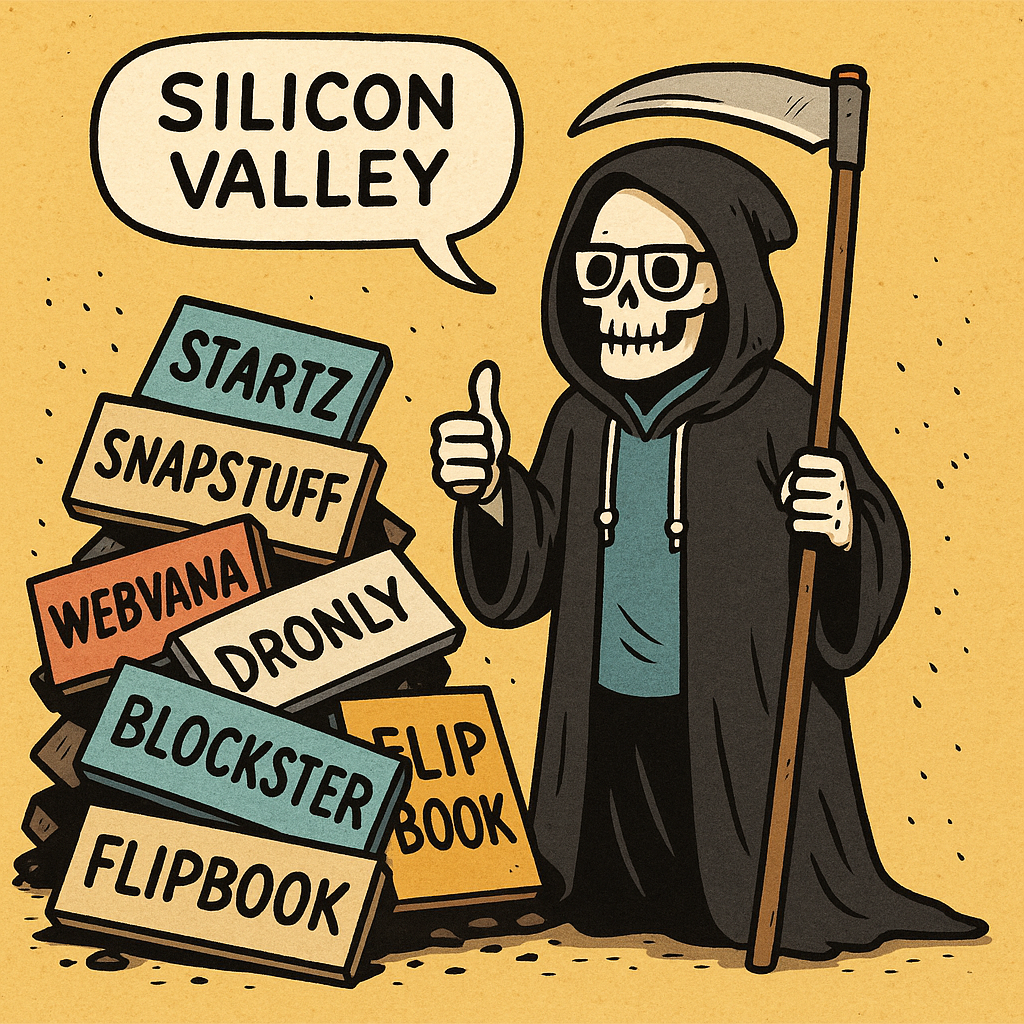Failure was a great motivator for me!
My Aunt L
… exclaimed my aunt and friend, L, as she reflected on what motivated her to study in school. I am one month in to working full-time on building ZentusIO – a company dedicated to translating messy data into operational excellence for abundant and low cost renewable energy.
The source of Aunt L’s schoolday drive has also been our theme since the inception of this company. This is less of the shining beacon of hope to strive towards with unrelenting confidence … and more of a Silicon Valley Grim Reaper leering at me by the pile of failed startups that rarely make the headlines, unless they went out with a bang.

Don’t get me wrong, our team determined to succeed, but to get there we have to not fail first.
Here at Stanford Graduate School of Business and Doerr School of Sustainability, they are exceptionally good at teaching people the art of Not F**king Up.

According to this study of ‘101 startup failure post-mortems‘ by CBInsights, the top three reasons startups fail are:
- No market need
- Ran out of cash
- Not the right team
So based on the mentorship we receive here, as a team we are channeling our energies into mitigating the risks of 1. and 3. before 2. happens and Silicon Valley’s Grim Reaper collects his dues. This means that we are simultaneously fine-tuning our team alignment as well as our product-market fit, an approach endorsed by author of Founder Dating Playbook, Gloria Lin:
When it comes to starting a company, you can figure out the right space to go after and find the right person to tackle it with in parallel. Don’t compromise on either.
Gloria Lin
So far for us, this has involved the following tenets:
Find (and Understand) your Haystack
In research-driven inspiration, a process for researching your market and the market potential of your ideas, was pioneered by Scott Brady, they discuss “finding your haystack” – the area in which you want to want to find a problem worth pursuing.
- Map out your team’s skills, interests, and goals.
- Map out the industry – who are the stakeholders, how do they rely on each other, what are the incentives/barriers, how does the money flow between them. Steve Blank provides this great primer on mapping out any industry.
Hypothesis -> Test -> Learn, as fast as you fucking can
- Formulate hypotheses about the problems you believe exist, and who needs them solved, for which your team is interested and competent enough to build solutions for.
- Brainstorm the critical assumptions in your hypotheses that if proven false would kill your idea.
- Reach out to the people who could (in)validate these assumptions and book them in.
- Prepare your questions around problems you believe (hope) they have, inadequecies with their current alternative solutions (if they aren’t trying to solve it in some way, it’s not a problem – it’s a complaint), and the desperation/authority/budget they may have to give your solution a shot (you don’t need to have anything built to test this)
- Let them talk with gentle guidance on your part. You are trying to understand the bane of their working lives so that you can build the most elegant and approachable solution that effectively dissolves it.
- Synthesize your learnings with the team.
- Make the decision to persevere and (in)validate the next set of assumptions, pivot the idea, or kill it and pursue another one.
- Repeat, in time boxed ~2ish week periods.
Keep Calm & Make Relentless Forward Progress
- Track your learnings, and what you want to learn next – be it about the industry or the hypothesized customer/problem – and then formulate questions and reach out to people who could answer them.
- Given the barrage of entrepreneurship frameworks, advisor input, and probably conflicting data points from conversations, make a decision (quote Nat Turner) on what to learn or test next, and move forward. As serial entrepreneur Nat Turner has been known to say: “Being a good entrepreneur requires having a hundred conflicting data points in your head and being able to still make a decision”. So remember that there is no perfect way to find your problem, test your solution, align your team, or stitch together your business model. Jump and roll when you notice yourself locked into an analysis paralysis train. Hack your way relentlessly and jankily towards buildings your company as efficiently as you can with just enough confidence in your direction.
- Trust your team’s experiences in your haystack of choice and initialize hypotheses on these intuitions as well as market research
- Keep the team aligned on daily, weekly, monthly goals; and the tools used to collaborate.
Don’t Squander your Time on Busywork
- Your time is so precious, every meeting should have a point, every goal should be time boxed, every team member should feel confident about what they are trying to uncover next and how they are going to collaborate with the rest of the team to do so.
- When you doubt yourself, tell doubt to kindly f**k off, you have no time for that.
- Allocate time for networking with non-customers, but keep it focused. Every meeting should have a point i.e. to patch up your view of the industry, flirt with investors you want on your side, or get introductions to others.
- The rituals that enable you to live with sound mind and body are sacred. Sleep, eat, move, go outside, laugh, love, play, learn.
Leave a Reply